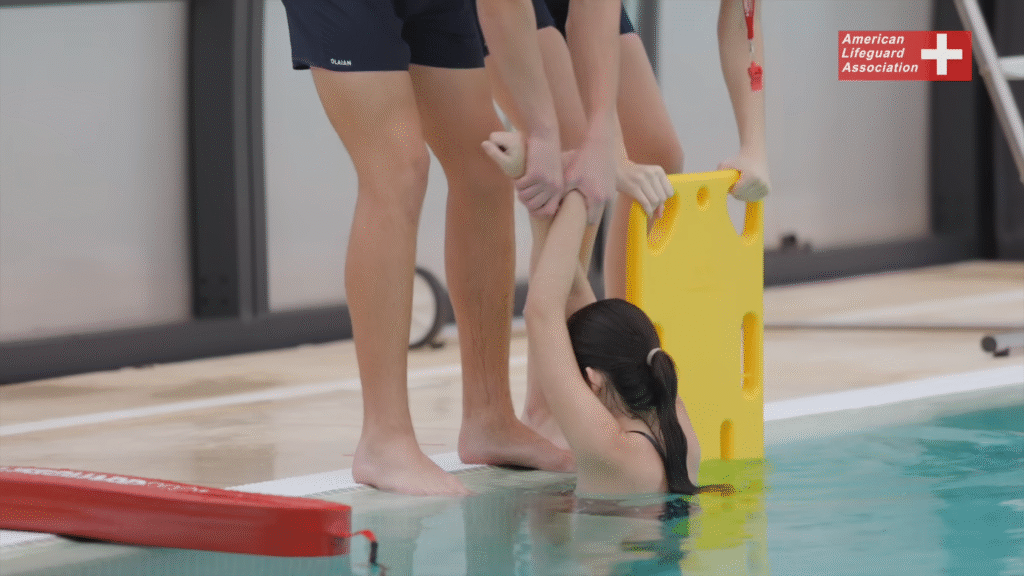
There are a few professions that deal with life-threatening situations and are responsible for saving the lives of many during their duty hours. In lifesaving professions and dealing with potential life-threatening situations, lifeguarding has its place. The water safety industry is a big industry that is dedicated to making things better for people wanting to enjoy water in summer.
In situations where a professional has a duty of care for swimmers or beach visitors, lifeguards’ ability to respond rapidly can mean the difference between life and death. A key part of lifeguarding training is recognising that water-related emergencies can be of different conditions expected in any aquatic environment. The emergencies range from minor injuries to severe emergencies like a heart attack, drowning, to name a few, and what is required is a combination of knowledge, training and frequent lifeguarding recertification to give an individual a base to act.
Identifying Distressed Swimmers
Distressed swimmers are perhaps the most frequent rescue situation for a lifeguard. To an untrained eye, they can occasionally appear to be just playing in the water; in reality, they are displaying indicators of suffering like bobbing heads or flailing arms that show they cannot call for aid. Looking particularly for the indicators surrounding these people, lifeguards also have to be always alert.
Good lifeguard training and certification hard work will enable them to not only individually identify the drowning swimmer but also react appropriately. Acting properly promptly helps one to reduce the chances of adding to a situation when it doesn’t need to happen or prevent a drowning completely.
Handling cases of drowning
Drowning is the most dire and time-sensitive situation lifeguards may encounter. Drowning can often be incredibly quiet, as the public may not think. The victims generally slip silently out of sight underwater, more so than we might imagine, while the public might expect a person yelling or waving for help. Lifeguards have been trained to recognise the quiet struggles of people in distress and provide an appropriate and immediate reaction.
Drowning victims require immediate reaction, but some caution in movement, as the first movement has a chance to worsen the spinal injury or delay rescue. The lifeguards will train again and again to ensure they understand how to apply a rescue technique. The training of every rescue technique from the vantage point of using flotation devices to face the rescue conditions in rescue poses, and then conducting CPR, should the victim be found to be unconscious. These lifesaving techniques are the foundation of a lifeguard’s job.
Risks from natural water and ecological hazards
When we think of a lifeguard, we think that they are trained people to handle all kinds of water-related emergencies, but we must also consider the unpredictability of the open waters as compared to the swimming pools or other controlled aquatic environments.
Swimmers have to be informed about warnings on riptides, sharp rocks, or jellyfish. Moreover, lifeguards must be able to plan evacuations and guarantee everyone’s safety should a natural water crisis occur, such as a fast weather shift or expanding waves. Particularly in erratic outdoor environments, lifeguard courses stress adaptability and situational awareness.
Coordinated Emergency Preparedness
Good water emergency reaction calls for faultless collaboration and communication, hence none of the lifeguards works alone. From the first alarm to post-incident care, lifeguards collaborate with members of the public, as well as other staff and emergency responders. Lifeguard certification includes chain-of-command processes, emergency action plans, and radio communication systems. One may simplify processes and achieve more good outcomes by being able to rely on a well-trained team in intense conditions.
Consistent Education and Readiness
Even the most seasoned lifeguards need to keep current. As new methods and technologies develop, the discipline of water safety changes. Regular renewals, skills testing, and usually continuous learning are necessary for lifeguard certification, not a one-time achievement. To make sure they stay confident and capable, lifeguards often go back over situations they could run across. Lifeguard training helps to create simulations of disasters and encourages muscle memory, which is critical under stressful, genuine situations.
Final Word: Dedication to Lifesaving Excellence
Unpredictable, urgent, and varied, water emergencies call for immediate and effective response from lifeguards—the first and sometimes only line of defence—who are prepared via thorough lifeguard training and up-to-date lifeguard certification. Lifeguards bear great responsibility whether they save a drowning person, provide CPR, or control heatstroke.
Maintaining high standards for training and certification is greatly dependent on organizations like the American Lifeguard Association. Their lifeguard training programs highlight the crucial thinking and leadership abilities needed to confidently manage emergencies, in addition to the physical requirements of the work. Through regular practice and investment in quality education, lifeguards may make sure they are always ready—because every moment really matters in their world.
Title: Swift Response Saves Lives: A Lifeguard’s Guide to Water Emergencies
Focus Keyword:lifeguard training and certification
Meta Description:Good lifeguard training and certification hard work will enable them to not only individually identify the drowning swimmer but also react appropriately. Acting properly promptly helps one to reduce the chances of adding to a situation when it doesn’t need to happen or prevent a drowning completely.
Publish this site:https://educationbeing.com/





